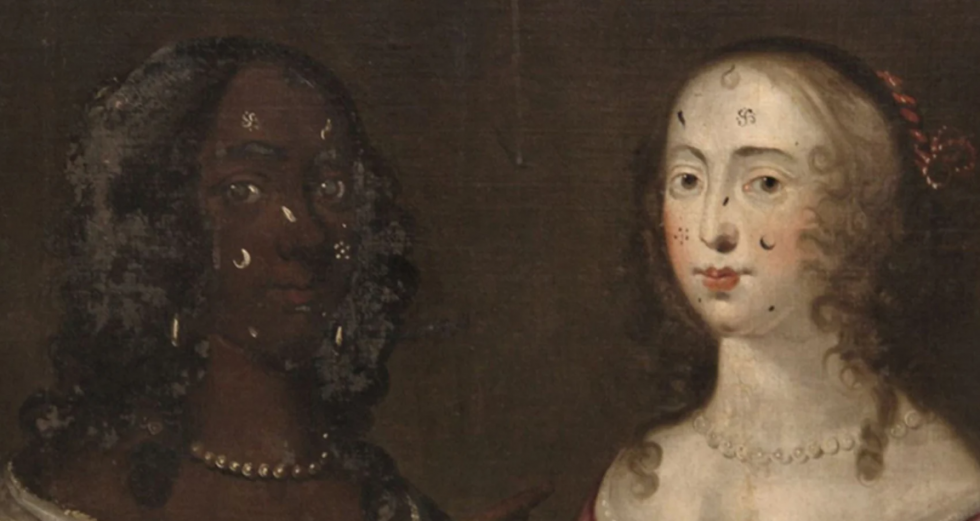Can You Tell Why This 17th-Century Portrait Is Unusual?

© Compton Verney
Paintings can tell stories without speaking a single word. They are a testament to the history of humankind and show how things have changed throughout the years. And while we are aware of the change in traditional values, fashion, and even social issues throughout the years, this painting is taking us back to reconsider a few things. The unusual 17th-century portrait showcases two women with strange marks. But, why makes it so unusual to see?
The “Unusual” 17th-Century Portrait
In a noteworthy acknowledgment of its “outstanding significance” in the exploration of race and gender dynamics in 17th-century Britain, a hitherto anonymous painting has been kept safe for the UK. The unusual artwork, titled “Allegorical Painting of Two Ladies,” shows two women. One black and one white. They are described as friends and equals, adorned in similar attire, hairstyles, and jewelry. Acquired by the Compton Verney Gallery in Warwickshire, the piece, dating back to around 1650 and belonging to the English school, serves as a moralizing commentary on the prevalent use of cosmetics during the era.
How True Is It to the Era?
The painting shows the women’s faces covered in distinctive beauty patches. This was a fashionable trend of the time. However, the inscription on the artwork was considered a sin of pride. This aligns with the widespread 17th-century perspective critiquing the alteration of one’s natural appearance through cosmetic enhancements. The acquisition of this painting by Compton Verney underscores its commitment to preserving. It also shows historical works that contribute significantly to the understanding of social attitudes and cultural nuances of bygone eras.

The use of silk or velvet patches, shown in the 17th-century painting, posed a potential religious risk. Wearers risked suffering the wrath of God. These patches served the dual purpose of hiding imperfections or signs of disease. Interestingly, in the artwork, the white woman is adorned with black patches of diverse shapes. The black woman wears white patches, adding a nuanced layer to the symbolic and beautiful elements of the painting.
The Portrait Was Once at Risk
The painting, auctioned in Shropshire in 2021, faced the prospect of leaving the UK forever. However, a temporary halt was imposed by the Reviewing Committee on the Export of Works of Art and Objects of Cultural Interest. This was to allow the UK the opportunity to acquire it. This independent body, operating under Arts Council England, shows whether cultural objects set for export hold national importance based on specific criteria.
The committee’s report emphasized the uniqueness of the painting. They showed a black female sitter in the 1650s. Additionally, this could spark vital discussions about race and gender in that era. The committee argued that the artwork shows debates on morals, ideal beauty, gender, female agency, and race, making its removal from the UK a “misfortune.” Moreover, the painting’s potential relocation overseas was only halted pending the search for a UK buyer.
Where Is the Painting Now?
The oil painting, previously unknown to scholars, emerged from the estate of the sixth Lord Kenyon and was initially valued at £2,000 to £4,000. However, its significant historical importance generated intense interest, leading to a final auction price of £220,000. Compton Verney got the painting for over £300,000, receiving financial support from the National Heritage Memorial Fund (£154,600) and the ACE/V&A Purchase Grant Fund (£50,000), with the gallery covering the remaining amount through an acquisition fund founded from a previous painting sale.
The artwork, titled “Two Ladies,” measuring 640 x 750mm, will undergo conservation and in-depth study at the Yale Centre for British Art at Yale University. Following this, it is scheduled for public display at Compton Verney in the coming year. Compton Verney, situated in a Grade I-listed Georgian mansion with extensive parkland, is an accredited museum and registered charity known for its permanent collections.
What do you think of this beautiful artwork?
You might also want to read: This Flea Market Painting Turned From $4 to $2.4 Million


